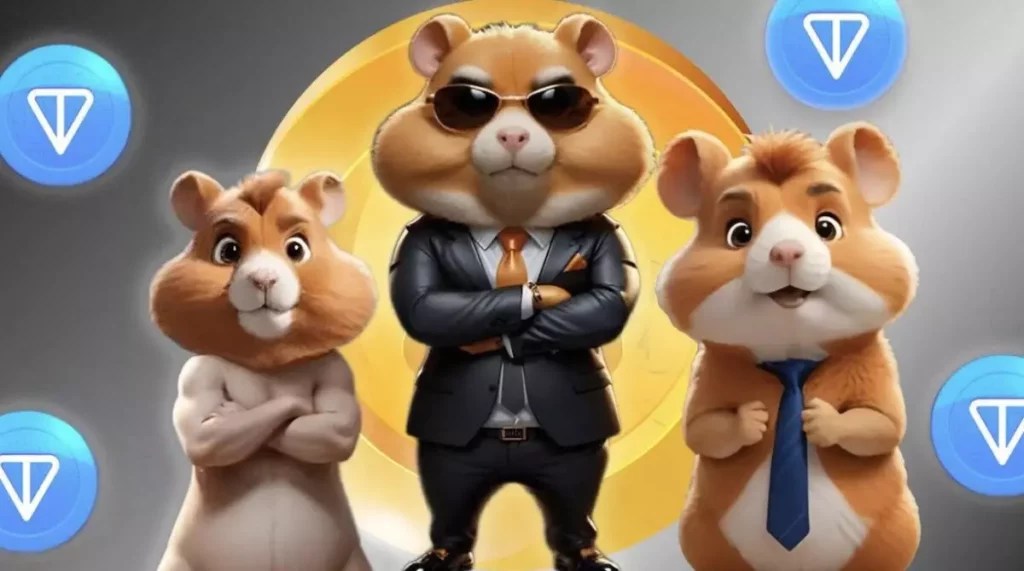Hamster Kombat, a Telegram-based clicker game, is making waves in the gaming community with an ambitious roadmap that reaches into 2025. The game’s development team is not just introducing minor updates; they are actually reimagining the entire gaming experience by integrating non-fungible tokens (NFTs), building a Web3 gaming platform, and developing a unique ecosystem of tokens. The plans outlined by the Hamster Kombat team have the potential to not only transform the game itself but also reshape the landscape of blockchain gaming altogether.
At the core of Hamster Kombat’s strategy is the incorporation of NFTs as in-game assets. This innovative approach aims to fundamentally change how players interact with the game. By allowing players to own, trade, and monetize items obtained in the game, it creates a robust ownership model that incentivizes engagement and participation. Such an economic model has proven successful in other games, and Hamster Kombat’s decision to adopt it is indicative of a broader trend towards player empowerment in digital environments.
Additionally, the introduction of an ad network is expected to boost revenue, effectively funding further enhancements for the game. By creating a competitive framework, including potential clan championships, the developers are laying the groundwork for a player community that is not only engaged but also incentivized to compete and interact on deeper levels.
One of the most ambitious elements of Hamster Kombat’s roadmap is the vision for a Web3 gaming ecosystem that transcends traditional idle clicker games. The developers see this project evolving into a core component of a more extensive network that merges the ease of Web2 with the decentralized principles of Web3. This blend aims to create an environment where players can enjoy a more transparent and community-driven experience, especially compared to current offerings.
The envisaged token economy, featuring strategies such as buybacks and burns for the HMSTR token, serves as a crucial foundation for this ecosystem. The intention to utilize earnings from the ad network to buy back and eliminate tokens from circulation highlights a strategy designed to foster scarcity and potentially elevate the market value of the HMSTR token. While some analysts predict a positive future for this cryptocurrency, others remain cautious, underscoring the inherent risks of speculative digital markets.
Recently, Hamster Kombat conducted a highly anticipated airdrop of HMSTR tokens, yet the event was met with mixed responses from the community. Out of a total player base of over 300 million, only 131 million qualified for rewards, with another 2.3 million disqualified for suspected cheating. The disappointment stemmed not only from the limited number of participants eligible for the airdrop but also from the quantities of rewards distributed, which many deemed underwhelming.
The market responded swiftly, with the price of HMSTR witnessing significant declines immediately following the airdrop. Depending on the source, values plummeted by 25% to 41%, a stark indication of the volatility existent within crypto markets. Additionally, the presence of a significant amount of HMSTR tokens held in a Binance hot wallet raised concerns regarding centralized control over the token supply, posing a further challenge to its stability.
Despite encountering these setbacks, the Hamster Kombat team remains optimistic, preparing for a second season while also contemplating the addition of new games into its ecosystem. This determination reflects a proactive approach to rekindle interest in the project and stabilize the firm’s tokenomics over time. The roadmap ahead is laden with key milestones, notably the rollout of an NFT marketplace designed to engage players further and promote a fully-fledged player-driven economy.
As Hamster Kombat forges ahead, its success will likely be intertwined with the evolution of the blockchain gaming industry. The increasing embrace of decentralized gaming platforms aligns perfectly with the project’s goals, presenting an opportunity to redefine how games are experienced. The principles of transparency and community-centric initiatives promised by Web3 technologies are becoming more mainstream, setting a stage for games like Hamster Kombat to thrive.
The roadmap laid out by Hamster Kombat signifies a bold vision for the future of gaming on Telegram and beyond. Their strategies involving NFTs, token buybacks, and a focus on competitive play could serve as a model for other blockchain games striving to achieve a balance between engaging gameplay and impactful economic systems. As developments proceed, all eyes will be on Hamster Kombat to see whether these strategies yield the desired success for its dedicated fanbase. The forthcoming months will be crucial in determining if Hamster Kombat can indeed cement its place in the thriving Web3 landscape.



















Leave a Reply